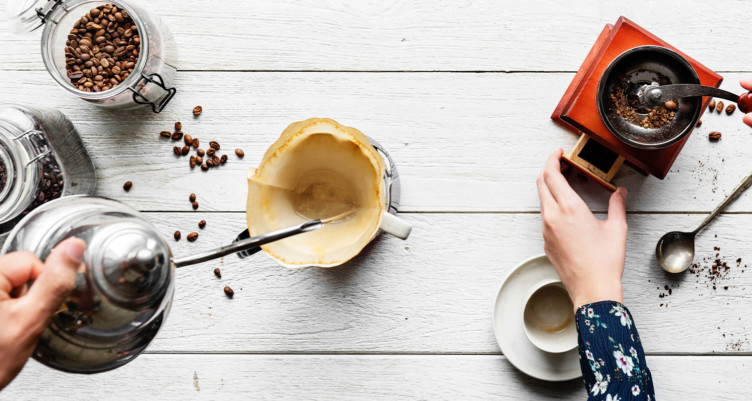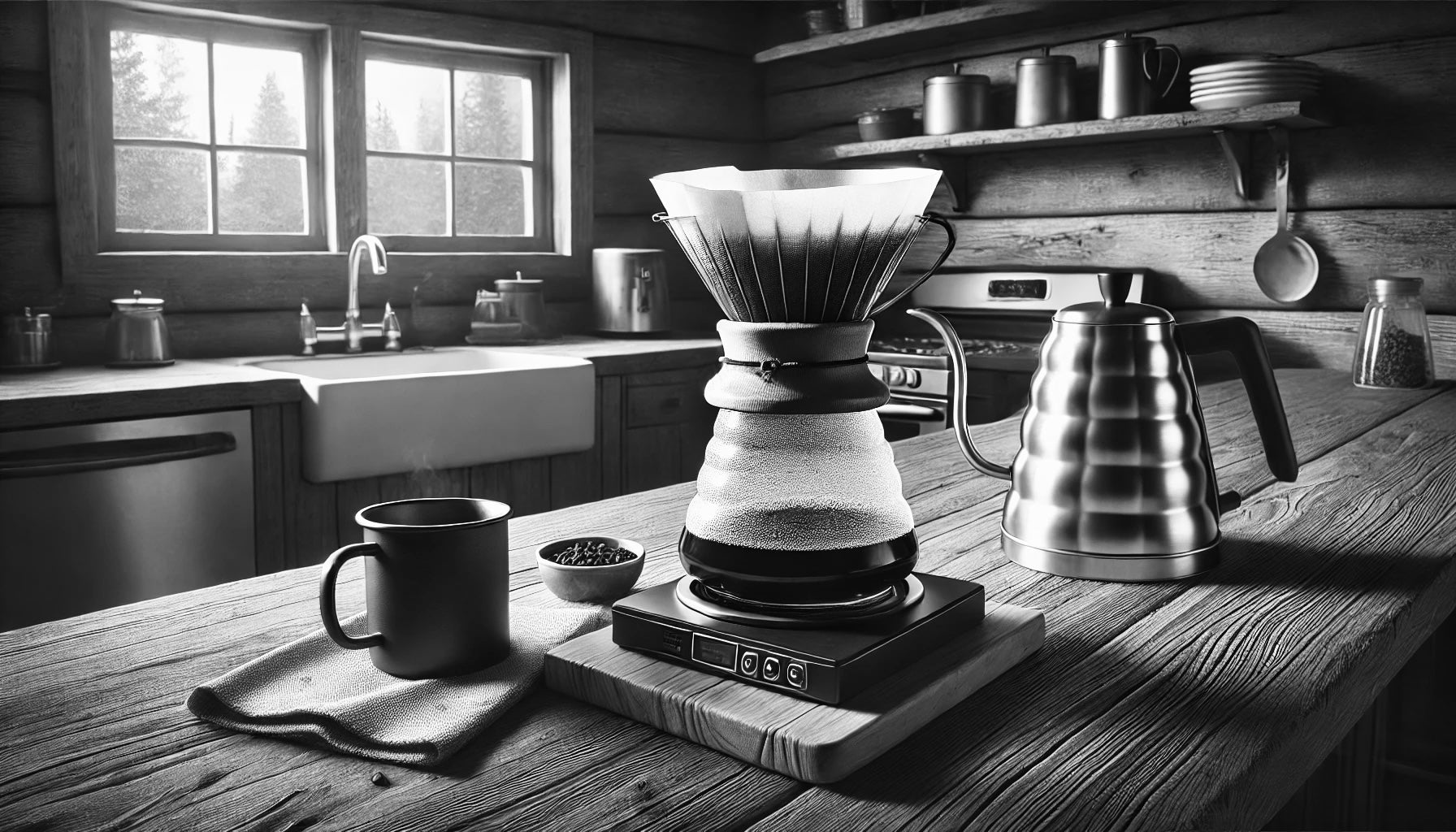The Impact of Different Coffee Brewing Methods on Flavor and Aroma
The Impact of Different Coffee Brewing Methods on Flavor and Aroma
Blog Article
The Science Behind Coffee Developing: Just How Temperature Level and Time Affect Your Beverage
Recognizing the scientific research behind coffee developing exposes that temperature level and time are not mere variables but pivotal elements that dictate the drink's taste profile and general top quality. As we explore the nuances of these aspects, the inquiry develops: just how can one properly equilibrium temperature level and time to attain that perfect brew?
The Chemistry of Coffee Extraction
The chemistry of coffee removal looks into the intricate procedures that transform raw coffee beans into the fragrant drink delighted in worldwide. This change mostly involves the solubility of various compounds existing in the beans, which are influenced by aspects such as work size, water top quality, and the developing approach used.
Throughout the developing procedure, warm water serves as a solvent, drawing out soluble compounds, consisting of high levels of caffeine, lipids, sugars, and acids, from the coffee premises. Each compound adds to the taste account, scent, and body of the final drink. Acids are responsible for brilliant and appetizing notes, while oils contribute to an abundant mouthfeel.
The removal procedure is not consistent; different substances dissolve at various prices. The first stages of brewing remove acids and sugars, resulting in a positive acidity, while extended removal can bring about anger as a result of over-extraction of unwanted compounds. Comprehending these chemical interactions is important for enhancing developing methods, as the equilibrium between removal time and water temperature level can dramatically affect the general quality of the coffee. Inevitably, mastering the chemistry of coffee removal is crucial to attaining a all-round and delicious mug.
Ideal Developing Temperatures
Locating the ideal brewing temperature is necessary for unlocking the full potential of coffee flavors and aromas - coffee brewing methods. Research study shows that the ideal variety for brewing coffee lies in between 195 ° F to 205 ° F(90 ° C to 96 ° C) Within this range, the extraction procedure properly dissolves the desirable soluble compounds in coffee beans, resulting in a delicious and well balanced cup
Brewing at reduced temperatures, such as below 195 ° F(90 ° C ), may lead to under-extraction, producing an acidic and weak brew with soft tastes. On the other hand, developing at temperatures exceeding 205 ° F(96 ° C) can result in over-extraction, producing a bitter and harsh taste as a result of the extreme dissolution of undesirable substances, such as tannins.
In addition, the optimal brewing temperature level can differ depending upon the coffee bean kind and roast degree. Lighter roasts usually benefit from a little greater temperature levels to boost their complicated flavor profiles, while darker roasts might be better matched to lower temperatures to alleviate resentment.
Eventually, keeping accuracy in brewing temperatures is essential for attaining an unified balance of flavors, making certain that every mug of coffee supplies an enjoyable sensory experience.
Effect of Brewing Time
Developing time plays an essential role in identifying the flavor profile and overall high quality of coffee. The extraction process, which affects the taste, fragrance, and body of the beverage, is mostly based on the length of time the coffee grounds touch with water. Much shorter brewing times can result in under-extraction, bring about a sour or weak flavor, as not enough soluble compounds are dissolved. On the other hand, extended brewing can bring about over-extraction, where unfavorable substances are released, resulting in an astringent or bitter preference.
Optimum developing time varies relying on the method utilized and the grind size of the coffee. A French press usually requires about 4 minutes, while coffee extraction is typically completed within 25 to 30 secs. It is vital to calibrate developing time in combination with various other variables, such as water temperature level and coffee-to-water proportion, to attain the preferred flavor account.
Understanding the influence of brewing time allows coffee enthusiasts to refine their brewing strategies, ultimately boosting the sensory experience of their mug (coffee brewing methods). With careful focus to this variable, one can open the complete potential of the coffee, exposing its unique attributes and nuances
Brewing Techniques and Their Impacts

For example, methods like French press and cold mixture enable a much longer steeping time, leading to a fuller body and robust flavor due to raised extraction of oils and soluble solids. Alternatively, espresso developing uses high pressure and a much shorter extraction time, creating a concentrated shot that stresses extreme flavors and a rich crema.
Pour-over strategies, such as Chemex or V60, use a more regulated removal procedure, allowing the brewer to adjust circulation rate and water circulation, which can boost brightness and clarity. Percolation methods cycle water with the coffee grounds numerous times, leading to a stronger, usually bitter flavor.
Lastly, the use of paper filters versus steel filters can likewise affect the final taste; paper filters normally generate a cleaner cup by trapping oils and fine particles, while metal filters allow more oils to travel through, adding to a fuller mouthfeel - coffee brewing methods. Understanding these nuances can raise the coffee experience dramatically
Tips for Improving Your Brew
A well-executed brew can change even the most basic coffee right into an amazing experience. Grind the beans simply prior to brewing to make the most of quality, making certain the grind size matches your brewing method-- coarser for French press and finer for espresso.
Water high quality plays an essential function; usage filtered water devoid of pollutants. The optimal why not look here brewing temperature level ranges between 195 ° F and 205 ° F(90 ° C to 96 ° C ) Also warm can blister the coffee, while also cool may under-extract flavors.
Timing is just as essential. For immersion methods, steeping for 3 to five minutes is ideal, whereas drip techniques commonly take around five minutes. Experiment with brew times to find your favored stamina.

Conclusion
In summary, the elaborate relationship in between temperature and time is critical in the coffee developing procedure. Abiding by optimal developing temperature levels between 195 ° F and 205 ° F, together with exact timing customized to each approach, ensures the desired flavor account is accomplished. Recognizing these clinical principles equips individuals to fine-tune their brewing techniques, ultimately resulting in an extra well balanced and pleasurable coffee experience. Mastery of these variables is crucial for any kind of coffee lover looking for excellence in their beverage.
Recognizing the scientific research behind coffee developing discloses that temperature level and time are not mere variables but essential elements that dictate the beverage's taste profile and overall top quality. Understanding these chemical interactions is critical for enhancing brewing techniques, as the equilibrium in between extraction time and water temperature can additional info significantly affect the total top quality of the coffee.Brewing time plays an essential function in figuring out the flavor account and overall high quality of coffee. By concentrating on these aspects-- bean top quality, grind dimension, water temperature, steeping time, and ratio-- you can raise your coffee brewing process, resulting in a regularly premium cup.
In summary, the detailed connection in between temperature and time is vital in the coffee brewing procedure.
Report this page